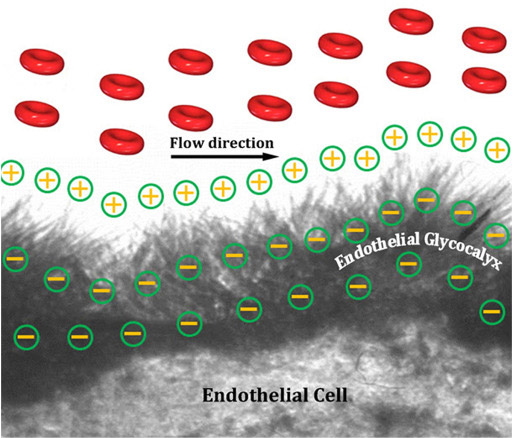COVID-19 Clotting Caused By Damage Of Small Vessels And Glycocalyx Which Releases Hyaluronic Acid, Syndecan-1, P-Selectin That Promotes Agrregation
Source: COVID-19 Clotting Aug 27, 2020 4 years, 7 months, 4 weeks, 2 days, 1 hour, 22 minutes ago
COVID-19 Clotting: It has been found that a major complication occurring in most critically ill COVID-19 patients is clotting in the lung's small blood vessels which leads to low oxygen levels in the body. Understanding why blood clots occur and how to treat them is key to treating severe cases of COVID-19.

A new study by researchers from Lawson Health Research Institute and Western University led by Dr Douglas Fraser, has uncovered more details about how these clots are brought about.
Dr Fraser, lead researcher from Lawson and Western's Schulich School of Medicine & Dentistry, and Critical Care Physician at LHSC told Thailand Medical News, "The reason for this clotting has been unclear. Most suspect the clotting mechanisms in our blood are put into overdrive and so many clinicians have been treating with anticoagulant therapies like the drug heparin. But we've uncovered an entirely different mechanism."
The study team further analyzed the blood samples from their 30 participants, and found evidence to suggest that the inner linings of small blood vessels are becoming damaged and inflamed, making them a welcoming environment for platelets ie small blood cells to stick.
The team discovered that COVID-19 patients had elevated levels of three molecules: hyaluronic acid, syndecan-1 and P-selectin. The first two molecules are products broken down from small hair-like structures called the glycocalyx which line the inside of the blood vessels. Their presence suggests the glycocalyx is being damaged with its breakdown products sent into the bloodstream. The presence of P-selectin is also significant as this molecule helps to make both platelets and the inner lining of blood vessels adhere to one another.
The study findings were published in the Journal: Critical Care Explorations, the official journal of the Society Of Critical Care Medicine.
https://journals.lww.com/ccejournal/FullText/2020/09000/Endothelial_Injury_and_Glycocalyx_Degradation_in.1.aspx
Dr Fraser explained, "The glycocalyx keeps platelets from touching the inside wall of the blood vessel and helps facilitate the production of nitric oxide, which has an important role in preventing platelets from sticking. We suspect the body's immune response is producing enzymes that shear off these little hair-like structures, inflaming blood vessels and making them a welcoming environment for platelets to form clots."
The study team suggests that two therapies may hold promise for treating blood clots in COVID-19 patients: platelet inhibitors to stop platelets from sticking and molecules to protect and restore the inner lining of blood vessels.
Dr Fraser added, "By exploring these therapies as potential alternatives to anticoagulant therapies, we may be able to improve patient outcomes."
.jpg)
He commented, "Through our combined findings, we hope to provide tools to predict which patients will become the most severely ill and treatments for both hyperinflammation and blood clots."
>
For more about
COVID-19 Clotting, keep on logging to Thailand Medical News.

.jpg)